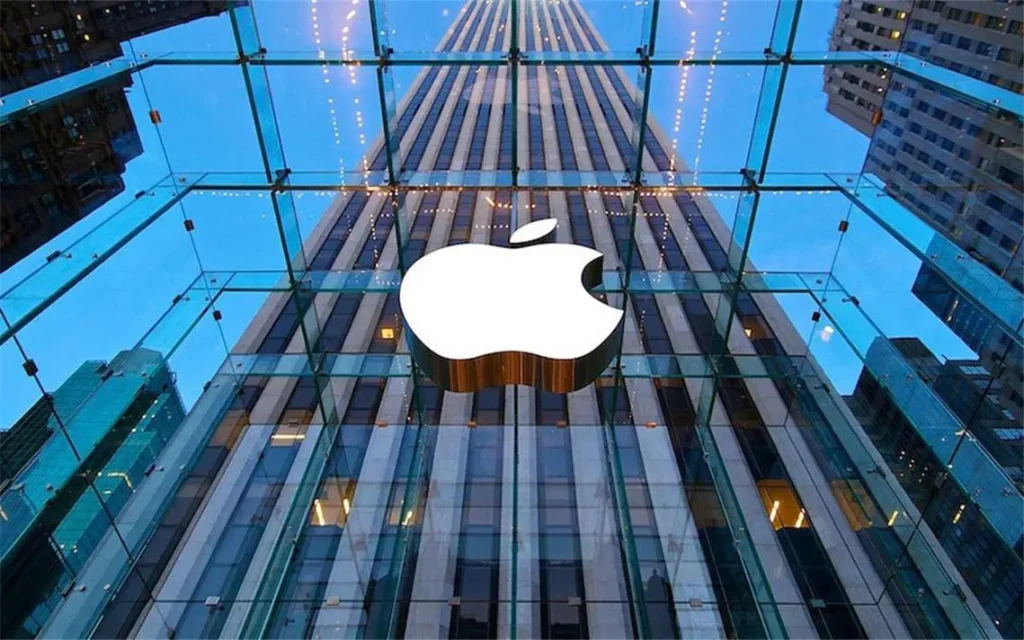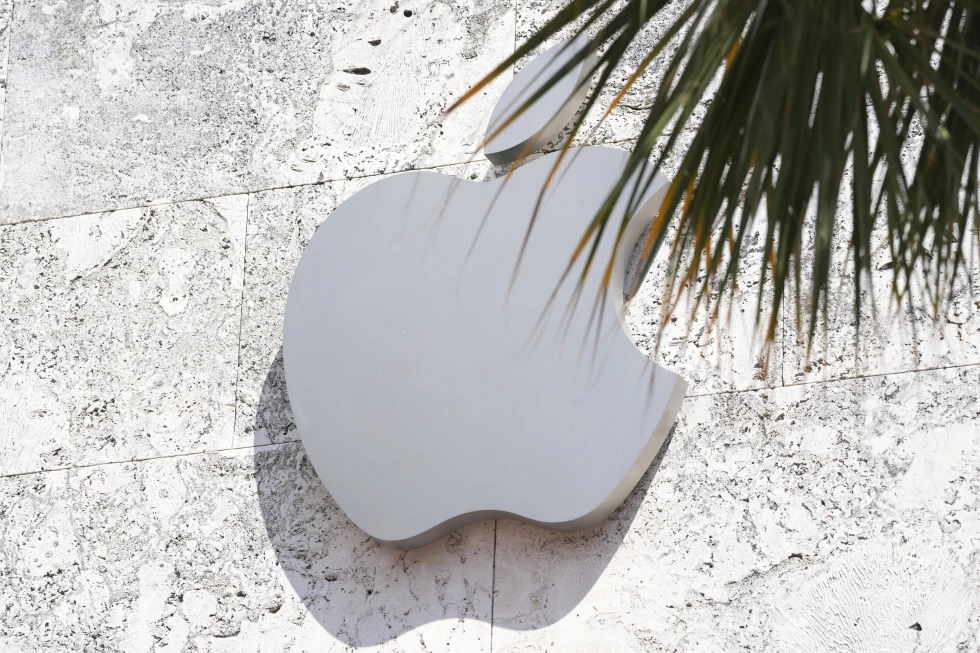In a recent turn of events, the U.S. Court of Appeals in Washington has made a significant decision to reinstate a sales ban on Apple’s premium watches, reigniting a patent dispute centered around a sensor.
This ruling has sparked concerns that the technology giant may be forced to remove the affected devices from stores for the second time within a month.
The court’s decision, issued on Wednesday, marks a pivotal moment in the ongoing legal battle between Apple and medical technology company Masimo.
The implications of this ruling are far-reaching, not only for the involved parties but also for the broader landscape of intellectual property rights, technology innovation, and consumer access to cutting-edge devices.
The origins of this legal saga can be traced back to a ruling by the U.S. International Trade Commission in late October, which found that a blood-oxygen sensor incorporated into Apple’s Series 9 and Ultra 2 watch models infringed upon patents held by Masimo.
This ruling prompted Apple to temporarily halt sales of the affected devices in late December. However, the company was granted a temporary reprieve from the appeals court, allowing it to resume sales while the patent dispute was under review.
This initial decision to block the sales ban provided Apple with a brief respite, but the recent reversal by the federal appeals court has once again cast a shadow over the availability of these popular smartwatch models.
For Apple, the reinstatement of the sales ban poses a significant challenge, potentially disrupting its sales and marketing strategies for the affected watch models.
The company now faces the prospect of navigating a complex legal landscape while balancing its commitment to innovation and consumer demand.
On the other hand, Masimo stands to benefit from the court’s decision, as it seeks to protect its intellectual property rights and assert its position in the competitive landscape of medical technology and sensor-based devices.
The outcome of this dispute will undoubtedly have lasting implications for both companies, influencing their market standing, financial performance, and future product development endeavors.
Beyond the immediate impact on Apple and Masimo, the revival of the sales ban raises broader questions about the interplay between intellectual property rights, technological innovation, and consumer access to cutting-edge products.
The case underscores the complexities inherent in navigating patent disputes within the rapidly evolving landscape of wearable technology and health monitoring devices.
As companies strive to develop and commercialize innovative features, sensors, and functionalities, the need to safeguard intellectual property rights while promoting healthy competition becomes increasingly paramount.
The outcome of this legal battle will undoubtedly shape the future trajectory of patent disputes in the technology sector, setting precedents for how such conflicts are resolved and how companies navigate the delicate balance between innovation and intellectual property protection.
The potential removal of Apple’s Series 9 and Ultra 2 watches from stores, as a result of the revived sales ban, has implications that extend to consumers and the broader market dynamics.
Consumers who have embraced these devices for their advanced features and connectivity may face uncertainty regarding availability and support for these products.
The temporary disruption in sales could also impact Apple’s market position in the smartwatch segment, potentially opening doors for competitors to capitalize on the situation.
Furthermore, the legal uncertainties surrounding the availability of these devices may influence consumer confidence in the brand and its ability to deliver consistent and reliable products.
In conclusion, the U.S. federal appeals court’s decision to revive the sales ban on Apple’s premium watches amid the ongoing patent dispute with Masimo carries significant implications for the involved parties and the broader landscape of technology innovation and intellectual property rights.
As the legal battle unfolds, it will be crucial to monitor the outcomes and implications for both companies, the evolving dynamics of technology innovation, and the impact on consumer access to advanced devices.
The resolution of this dispute will undoubtedly shape the future trajectory of patent disputes in the technology sector and set precedents for how companies navigate the intricate intersection of innovation, intellectual property protection, and market competition.
The recent developments in the legal battle between Apple and Masimo have brought to light the intricate intersection of intellectual property rights, technological innovation, and market competition.
The implications of the appeals court decision, the potential sales ban, and the possibility of redesigning Apple’s latest watch models have sparked widespread interest and raised critical questions about the future of wearable technology.
This essay aims to delve into the multifaceted aspects of this case, exploring the legal, technological, and business ramifications of the ongoing dispute.
The appeals process, with its anticipated duration of at least a year, presents a significant challenge for Apple, as it faces the prospect of halting the sales of its latest watch models in the U.S. until 2024.
The revival of the sales ban on the Series 9 and Ultra 2 watches further intensifies the urgency of the situation.
Apple’s potential options, including appealing the decision and seeking alternative resolutions, are complex and carry substantial legal and financial consequences.
The disclosure of Apple’s approval from the U.S. Customs and Border Protection for revisions that would remove the blood-oxygen sensor from the watches underscores the company’s proactive approach to navigating the regulatory landscape.
However, the decision-making process ahead will require careful consideration of the legal intricacies and potential long-term effects on Apple’s market position and brand reputation.
The removal of the blood-oxygen sensor from the Apple Watch models, if implemented, raises questions about the implications for consumer experience and the overall value proposition of the product.
The integration of health monitoring features has been a key selling point for wearable devices, and any alterations to these functionalities could significantly impact consumer perception and adoption.
Furthermore, the underlying technological dispute between Apple and Masimo highlights the complexities of intellectual property rights in the rapidly evolving landscape of wearable technology.
The disagreement over patented technology and the assertion of independence by Apple in its appeal underscore the intricate nature of technological innovation and the challenges of navigating intellectual property boundaries in a highly competitive market.
The potential for a negotiated settlement between Apple and Masimo presents a pivotal opportunity for both companies to resolve the dispute and chart a path forward.
However, the likelihood of such a resolution remains uncertain, given the contentious nature of the legal and technological disagreements at hand.

The implications of a potential settlement or lack thereof extend beyond the immediate legal proceedings and could influence industry dynamics and market competition in the long term.
Moreover, the broader implications for Apple’s product strategy and market positioning warrant careful examination.
The prospect of redesigning the Apple Watch models to comply with the ITC’s ruling raises questions about the company’s ability to innovate and differentiate its offerings in a highly competitive market.
The potential impact on consumer demand, brand perception, and market share underscores the far-reaching consequences of the ongoing legal battle for Apple’s business operations and strategic trajectory.
The legal battle between Apple and Masimo and its implications for the future of wearable technology encapsulate a complex interplay of legal, technological, and business considerations.
The outcome of the appeals process, the potential sales ban, and the strategic decisions made by Apple will reverberate across the industry, shaping the trajectory of wearable technology and intellectual property rights.
As stakeholders closely monitor the unfolding developments, the case serves as a compelling lens through which to examine the intricate dynamics of innovation, competition, and regulation in the digital age.
In conclusion, the legal battle between Apple and Masimo represents a pivotal juncture in the evolution of wearable technology, with far-reaching implications for the industry at large.
The convergence of legal, technological, and business considerations underscores the multifaceted nature of this case and its potential to reshape the landscape of innovation and competition in the years to come.
The recent development of the U.S. sales ban on Apple’s Series 9 and Ultra 2 watches has sparked significant debate and raised pertinent questions regarding the impact on Apple’s annual sales and the broader implications for the company’s market positioning.
This essay aims to delve into the multifaceted dimensions of this issue, examining the potential financial repercussions for Apple, the technological significance of the banned features, and the legal and ethical considerations surrounding the patent dispute between Apple and Masimo.
Furthermore, it seeks to elucidate the broader implications for the wearable technology industry and the evolving landscape of intellectual property rights in the digital age.
Apple’s annual sales of $383 billion underscore its formidable position in the global market. The removal of the Series 9 and Ultra 2 watches from the U.S. market is projected to cause a discernible dent in the company’s revenue stream, with analyst estimates suggesting that the affected products contribute approximately $18 billion in annual revenue.
This underscores the substantial financial stakes at play and the potential impact on Apple’s overall performance in the consumer electronics sector.
Moreover, the strategic significance of the blood-oxygen sensor technology integrated into these watches cannot be understated.
This feature represents a pivotal component of Apple’s broader endeavor to position its wearable devices as indispensable tools for monitoring users’ health and well-being.
The removal of these advanced health-monitoring capabilities from the U.S. market raises concerns about the potential dilution of Apple’s competitive edge and its ability to offer cutting-edge, life-saving technologies to consumers.
The legal battle between Apple and Masimo underscores the complexities of intellectual property disputes in the technology sector.
Apple’s assertion that the enforcement of the International Trade Commission’s (ITC) patent order would inflict unnecessary harm on its innovative product is a central point of contention.
The company’s emphasis on its status as a quintessentially American entity with a substantial domestic workforce serves to highlight the broader economic and employment implications of the ban.
Conversely, Masimo’s portrayal of Apple as a corporate entity engaging in the unauthorized use of intellectual property raises ethical questions about the protection of innovation and the fair compensation of companies that invest in groundbreaking technologies.
The characterization of Apple as a corporate bully engaged in the theft of vital intellectual property underscores the ethical complexities inherent in high-stakes patent disputes and the need for a balanced, equitable resolution that upholds the principles of fair competition and innovation.
The U.S. sales ban on Apple’s flagship watches has reverberations that extend beyond the confines of the company itself.
It raises broader questions about the regulatory environment governing wearable technology and the potential implications for other industry players.
The removal of advanced health-monitoring features from the market may catalyze a reevaluation of the regulatory frameworks surrounding such technologies, with potential ramifications for the development and commercialization of similar products by other companies.
Furthermore, the dispute between Apple and Masimo underscores the imperative of robust intellectual property protections in fostering innovation and incentivizing investment in groundbreaking technologies.
The resolution of this conflict will likely set a precedent for future disputes in the wearable technology sector, shaping the contours of intellectual property rights and competition in this rapidly evolving industry.

In conclusion, the U.S. sales ban on Apple’s Series 9 and Ultra 2 watches represents a multifaceted issue with far-reaching implications for the company, the broader wearable technology industry, and the legal and ethical landscape of intellectual property rights.
The financial ramifications, legal complexities, and industry-wide reverberations underscore the significance of this development.
As the dispute unfolds, it will be imperative to closely monitor the evolving dynamics and anticipate the potential ripple effects on the technology sector at large.
